Discover Samarkand and Bukhara: the Silk Road capitals of Uzbekistan
Architect Marwa El Mubark visits Bukhara and Samarkand, the Silk Road capitals of Uzbekistan, as the country launches its pavilion at the Venice Architecture Biennale 2023, and plans a new art biennial for 2025
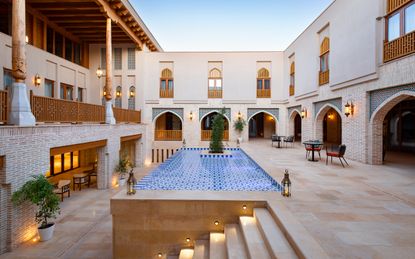
A landlocked part of Central Asia, Uzbekistan has a somewhat understated presence within today’s international stage. However, historically, two of its major cities, Samarkand and Bukhara, have played a pivotal global role as important stopping points along the ancient silk route, bolstered by the region’s cultural richness. As the country prepares for its participation in the Venice Architecture Biennale that opens next week, as well as for hosting the inaugural Biennial of Contemporary Art in Bukhara in 2025, we take a cross-section of its diverse landscape through a selection of offerings in the heritage-rich Samarkand, and its neighbour, Bukhara.
Samarkand and Bukhara: a cultural tour
Platan

A warm and intimate lunch destination off the Samarkand city centre on Pushkin Street, Platan boasts an eclectic, elegant yet moody interior in hues of red, yellow and green – the perfect backdrop for the range of tantalising cuisine on offer. In a country where meat features heavily as the centre of most dishes, Platan offers a welcome range of vegetarian options, from their ‘Vitamin’ salad, which consists of shredded, fresh vegetables, to their lentil soup and delicious samsas – an Uzbek equivalent to the English pasty.
Registan Square

Constructed under the rule of Timur the Lame in the 14th century, Registan Square is the heart of the ancient city of Samarkand. With its large central plaza, framed by three ornate madrassas – or Islamic colleges – it is the perfect place to take in the breadth of the city’s architectural heritage and craftsmanship. Walls and floors are adorned in glazed clay tiles, brick formations and stone carvings, the oldest of which can be seen in the Ulugh Beg Madrasa, dating back to 1420.
Timurid architecture

A centre for pilgrimage since ancient times, the historic Shah-i-Zinda complex dates back to the 11th century and is visible in the city as a row of graceful mausoleums, shining in tones of blue and running up the ancient slopes of the Afrasiab district. Prior to acting as a necropolis burial site, this complex was an inhabited city of its own, with various tradespeople engaged in metalwork, woodwork and embroidery among other activities. The remnants of these are still visible in the myriad of crafts markets housed within its walls today.
Summer Palace Gardens

Chosen for its climate and geography, which make it the coolest geographical point in town, the Sitorai-Mokhi-Khosa Summer Palace was originally built as a retreat for the last Emir of Bukhara, Alim Khan, to escape the intensity of the region’s hot summer months. Consisting of three buildings that house respectively a banquet hall, a chess room and a traditional chaykhana tea house, the complex is set in a palatial series of rose gardens surrounded by courtyards. These grounds make for a key public wellness hub for the city today, offering a space to stroll under the shade of large trees, next to fountains that cool the air. It even has its own pheasant sanctuary.
Bukhara market

A historic resting point for travellers along the Silk Road, Bukhara has always been a hotspot for cultural and commercial exchange. As such, a strong market and trading culture emerged, which remain alive today under the roofs of the city’s historic monuments. The most prominent of these are the four trading domes located on each side of the city centre; The Toqi Telpak Furushon, the Tim Abdulla Khan, the Toqi Sarrofon Bazaar, and the Zargaron. Each one houses stalls showcasing the work of craftspeople specialising in a specific trade, from metalwork to ceramics and woodworking for everyday household items.
Afrasiab Museum

The Afrasiab Museum displays artefacts found during the excavations of its namesake city quarter, the historic centre of Samarkand until it was destroyed by the Mongols in the 13th century. The museum’s exhibits illustrate the history of Samarkand’s development from the time of Alexander the Great’s conquest. Although modest, it is a must-see for understanding the breadth of Uzbek history. Among other displays, it explores the story of Soqdiana - an ancient Iranian civilisation whose remains lie just beyond the museum walls – through a variety of frescos, ossuaries, knives, arrows, coins and pottery. The building was designed in 1970 by Armenian architect Bagdasar Arzumanyan, while the country was still part of the Soviet Union.
Wallpaper* Newsletter
Receive our daily digest of inspiration, escapism and design stories from around the world direct to your inbox.
Samarkand Airport

Inspired by the scale and complexity of the nearby 1420s Mirza Ulugh Beg Observatory, the new terminal at Samarkand Airport combines a mix of historical, local and modern inspiration in its design. The large-scale structure opened in 2022, created by Turkish practice KIKLOP Design & Engineering. It features organic shapes inside and out, warm timber internal accents, and modern materials throughout, as well as all the mod cons that a major transport hub of its kind needs.
Mercure Bukhara Old Town

Located in the historic centre of Bukhara and just a stone’s throw from the nearest airport, the Mercure Hotel is Uzbek architect Zoirsho Klichev’s most recent work, as well as the newest contemporary addition to the city’s Old Town. Surrounded by some 140 architectural monuments from UNESCO’s World Heritage List, the hotel draws on the region’s courtyard typology with a tall Iwan arch that frames an outdoor wellness spa and pool. Internally, traditional materials such as Bukhara bricks and adobe plaster, complement the building’s historical context, preparing visitors for what lies beyond its walls.
-
 ‘There are hidden things out there, we just need to look’: Studiomama's stone animals have quirky charm
‘There are hidden things out there, we just need to look’: Studiomama's stone animals have quirky charmStudiomama founder's Nina Tolstrup and Jack Mama sieve the sands of Kent hunting down playful animal shaped stones for their latest collection
By Ali Morris Published
-
 Tokyo firm Built By Legends gives fresh life to a performance icon, Nissan’s R34 GT-R
Tokyo firm Built By Legends gives fresh life to a performance icon, Nissan’s R34 GT-RThis Japanese restomod brings upgrades and enhancements to the Nissan R34 GT-R, ensuring the cult of the Skyline stays forever renewed
By Jonathan Bell Published
-
 Squire & Partners' radical restructure: 'There are a lot of different ways up the firm to partnership'
Squire & Partners' radical restructure: 'There are a lot of different ways up the firm to partnership'Squire & Partners announces a radical restructure; we talk to the late founder Michael Squire's son, senior partner Henry Squire, about the practice's new senior leadership group, its next steps and how architecture can move on from 'single leader culture'
By Ellie Stathaki Published
-
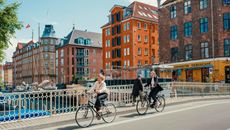 24 hours in Copenhagen: stay, bike, dine, and discover Danish design
24 hours in Copenhagen: stay, bike, dine, and discover Danish designPlan your 24 hours in Copenhagen: sleepover in a former brewery, wake up with a wild swim, and immerse yourself in the home of a modernist master
By Simon Mills Published
-
 Peter Beard’s biographer, Christopher Wallace, on writing the wild life of the quintessential Twentieth-Century Man
Peter Beard’s biographer, Christopher Wallace, on writing the wild life of the quintessential Twentieth-Century ManAuthor Christopher Wallace traces the footsteps of the original playboy-artist-activist Peter Beard, travelling from Kenya, to the Serengeti, Cassis and beyond
By Christopher Wallace Published
-
 Estelle Manor is a chic take on the hotel and country club
Estelle Manor is a chic take on the hotel and country clubEstelle Manor, a transformed Grade II-listed house and estate in Oxfordshire, welcomes guests with Roman and Williams interiors, parasols by the pool, and a soon-to-open tepidarium
By Henrietta Thompson Published
-
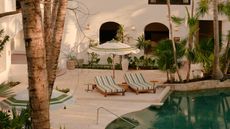 Maroma, A Belmond Hotel, Riviera Maya opens following a major redesign
Maroma, A Belmond Hotel, Riviera Maya opens following a major redesignOn the Yucatán Peninsula, the new-look Maroma showcases local craftsmanship and Mayan tradition with interiors led by interior architecture studio Tara Bernerd & Partners
By Charlotte McManus Published
-
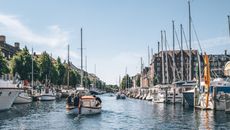 A weekend in wonderful Copenhagen
A weekend in wonderful CopenhagenThe ultimate weekend in Copenhagen starts here: discover the latest openings across the UNESCO World Capital of Architecture, stay in a hotel afloat, start your day with brilliant baked goods and ski down a power-station piste
By Simon Mills Published
-
 The Largo brings craftsmanship and creativity to Porto
The Largo brings craftsmanship and creativity to PortoThe Largo is the latest hospitality offering in Portugal's second city, conceived as an elevated residence with an art programme that connects it to the city’s creative community
By Tom Howells Published
-
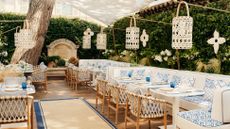 Louis Vuitton opens its summertime café in Saint-Tropez
Louis Vuitton opens its summertime café in Saint-TropezThe Louis Vuitton café in Saint-Tropez combines the brilliance of Michelin-starred chef Arnaud Donckele and pastry chef Maxime Frédéric for a one-of-a-kind Mediterranean feast
By Mary Cleary Published
-
 Qantas’ Airbus A350 cabins make non-stop to Australia a dream ticket
Qantas’ Airbus A350 cabins make non-stop to Australia a dream ticketExplore Qantas’ slick new Airbus A350 cabins, designed by David Caon, including minimalist first class suites
By John Arlidge Published